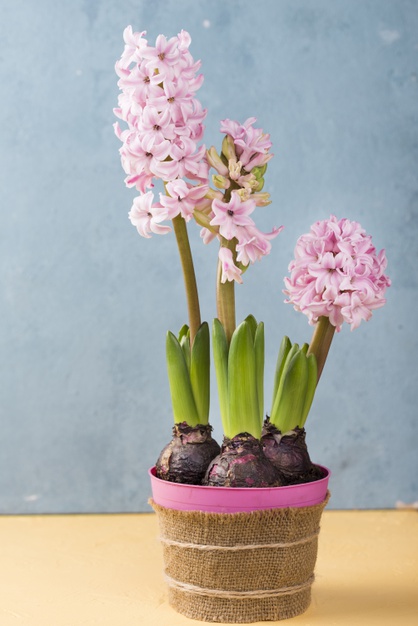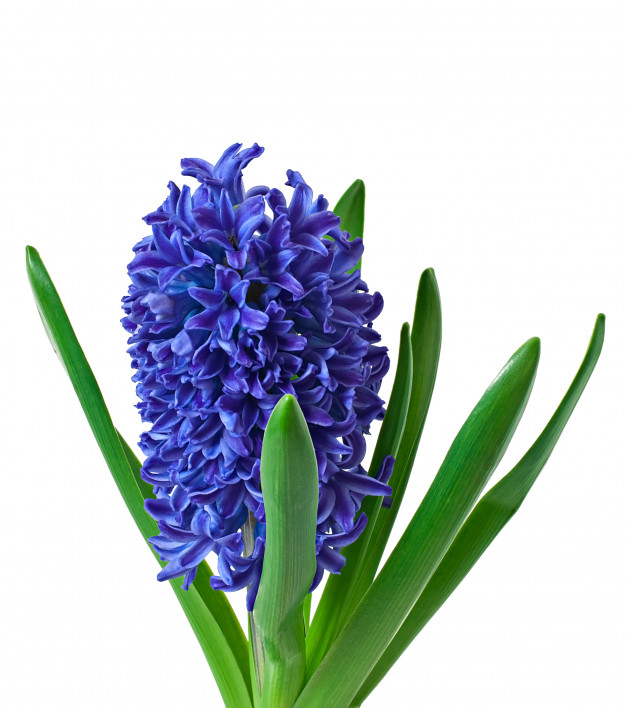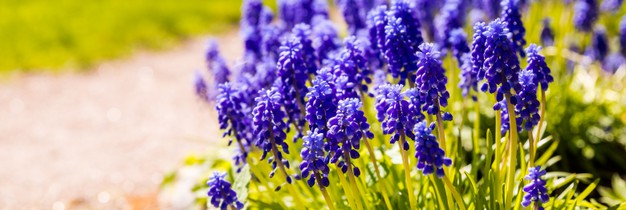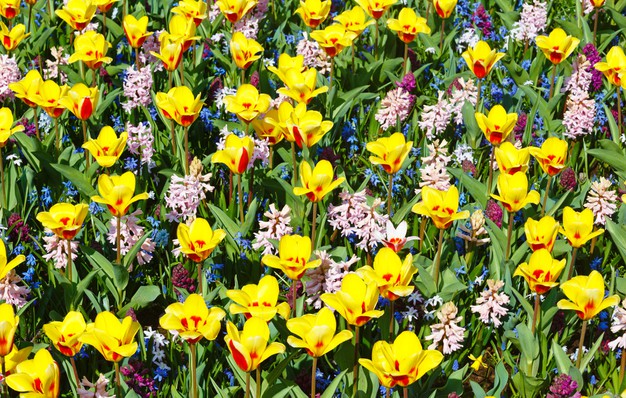
From the garden to the container to the forcing vase, there’s no shortage of ways to grow gorgeous Hyacinthus.
Hyacinths are spring-blooming bulbs with richly colored flowers. They have a beautiful fragrance that can perfume your entire garden. This perennial blooms in mid-spring at the same time as daffodils and early tulips.
Hyacinths come in a rainbow of colors including white, cream, pink, rose, apricot, lavender, cobalt blue, deep purple and wine red.
Hyacinth grow from bulbs, each producing around four to six linear leaves and one to three spikes (or racemes) of flowers. In the wild species, the flowers are widely spaced with as few as two per raceme and typically six to eight, growing to a height of 6–8 inches.
History

The genus Hyacinthus is considered native to the eastern Mediterranean. It is widely naturalized elsewhere, including Europe, Korea, North America and central Mexico, Cuba and Haiti.
The Dutch, or common hyacinth of house and garden culture, was so popular in the 18th century that over 2,000 cultivars were grown in the Netherlands, the chief commercial producer. This hyacinth has a single dense spike of fragrant flowers in shades of red, blue, white, orange, pink, violet or yellow.
A form of the common hyacinth is the less hardy and smaller blue- or white-petalled Roman hyacinth of florists. These flowers need indirect sunlight and should be watered moderately.
How To Grow

Like other spring-flowering bulbs, hyacinths are easy to grow. These bulbs should be planted in autumn and can be put in the ground from October to December for flowering in the spring months (usually March and April). The size of the flower spike is directly related to the size of the bulb. Biggest bulbs are desirable for exhibition plants or for potting; next largest size is satisfactory for bedding outside. Small bulbs give smaller, looser clusters with more widely spaced flowers.
Hyacinth bulbs need a cooling period in order to bloom properly. This means the bulbs must be exposed to temperatures of 40-45°F for at least 12-14 weeks. Since that doesn’t happen here in SWFL, you’ll need to pre-chill the bulbs in a refrigerator before planting them outdoors.
Hyacinths should be planted in well-drained soil. Set larger Dutch hyacinth bulbs 6 in. deep, 5 in. apart; set smaller ones and Roman hyacinth bulbs 4 in. deep, 4-5 in. apart. The bulbs grow best in full sun or partial shade with regular water during the growth and blooming periods.

Hyacinths look best when planted in informal groupings of 5 to 9 bulbs. For a natural effect, avoid straight lines and single rows.
Hyacinth bulbs can also be grown for indoor enjoyment. Pot the bulbs in fall and chill them at 40-45°F for the recommended 12-14 weeks (longer is fine). When you’re ready for spring, bring the pots out into a warm, sunny room and watch them bloom. Note: bulbs may be forced by chilling them one time, but not in future years.
At first, hyacinth grow best in a porous potting mix shaded and cooled by a layer of mulch at the surface. With enough shade, the roots will form and then, after the bulbs take root, the hyacinths need plenty of sunlight (plus a consistent environment of well-drained soil).
Where to Plant
Containers:

Hyacinths are a great choice for pots and planters. As the bulbs come into bloom, you can move the containers to a prominent location where it’s easy to appreciate the beauty and fragrance of the flowers.
They are lovely when a large number of them are planted together in close proximity. Just keep in mind that they require good drainage when planted in pots.
Flower Beds and Walkways:

Planting hyacinths near a doorway or along a walkway will let you enjoy their fragrance when you walk by.
Try mixing and matching hyacinths with daffodils or tulips for a beautiful spring display.
Perennial Gardens:

Hyacinths bloom when most gardens are still dormant. Planting groups of hyacinth bulbs at the front of a perennial garden will provide a glorious burst of color just when you need it most.
Usually bulbs bloom well the first year because the previous year they were grown in ideal conditions. The second year will depend on growing conditions. If there is too much shade or the drainage is not adequate, they will not perform well the second year. Also, hyacinths tend to produce fewer florets over time and looser stems. Many gardeners actually prefer this look.

IMPORTANT TO NOTE: Hyacinth bulbs are poisonous; they contain oxalic acid. Handling hyacinth bulbs can cause mild skin irritation. The plant’s bulbs are partly composed of calcium oxalate crystals, which act like barbs that are invisible to the eye. They can cause microscopic breaks in the skin and cause itching and irritation, so be sure to wear gloves or wash your hands thoroughly after handling bulbs and before touching your skin, face, or eyes.
Suggestion:
Plant extra hyacinths in an area where you won’t mind cutting the flowers. This way you can enjoy their fragrance indoors as well as out. Hyacinths are long-lasting in a vase and look lovely on their own or mixed with tulips and other early spring blossoms.

